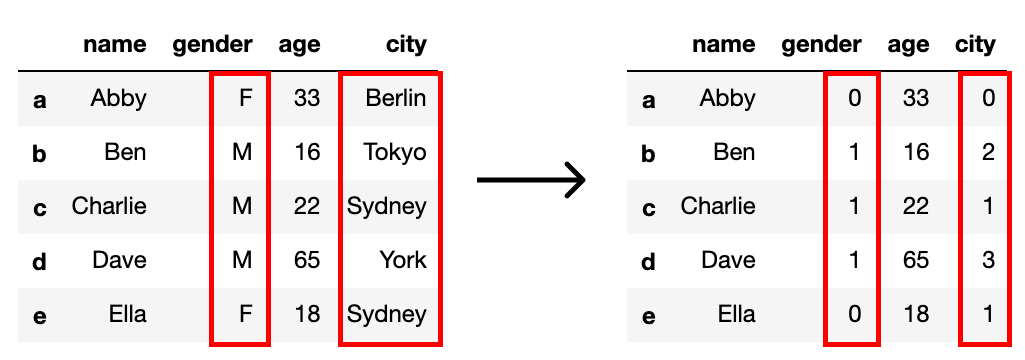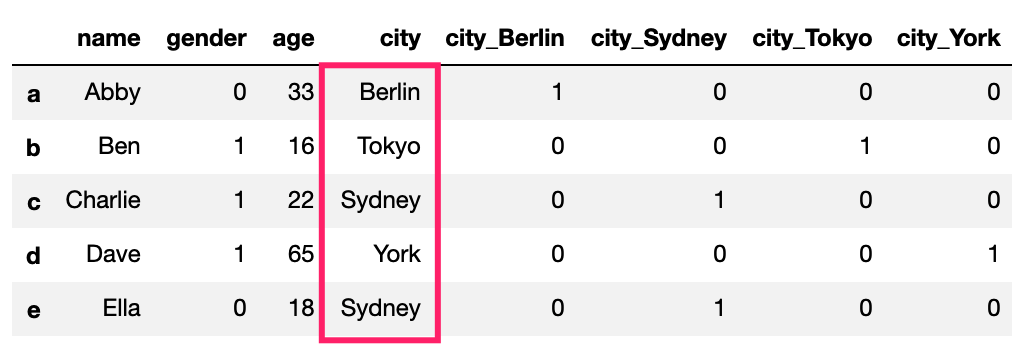Unlike Decision Tree Classifier, some machine learning models doesn't have the ability to deal with categorical data. The categorical data are often requires a certain transformation technique if we want to include them, namely Label Encoding and One-Hot Encoding.
Label Encoding
What the Label Encoding does is transform text values to unique numeric representations. For example, 2 categorical columns "gender" and "city" were converted to numeric values, a number stands for a certain category in the column. (we didn't convert the name column because usually it will be removed when actually applying models)

That's all for Label Encoding. But depending on the data, label encoding introduces a new problem. For example, we have encoded a set of city names into numerical data. But this is actually categorical data with a number indicator. Thus there is no relation between the values, i.e. in the example, York is not as 3 times as Sydney. To overcome this problem, we need to use the so called One-Hot Encoding.
One-Hot Encoding
What the One-Hot Encoding does is, it creates dummy columns with values of 0s and 1s, depending on which column has the value. It might be easier to understand by this visualization:

For illustratration purpose, I put back the original city name.
Further, we can drop one dummy column (usually the first column) since we can know the value from the rest dummy columns.
One more thing, the value type in dummy columns are object. It's better to convert them into float before applying models.
Code
Label Encoding
We can use the LabelEncoder() in sklearn's preprocessing.
One-Hot Encoding
To implement the Label Encoding and One-Hot Encoding together, we can use the get_cummies() function in Pandas:
Here is a function I wrote to creat dummy columns based on one column in a dataframe, original and first dropped, then join the dummy columns back to the original dataframe:
